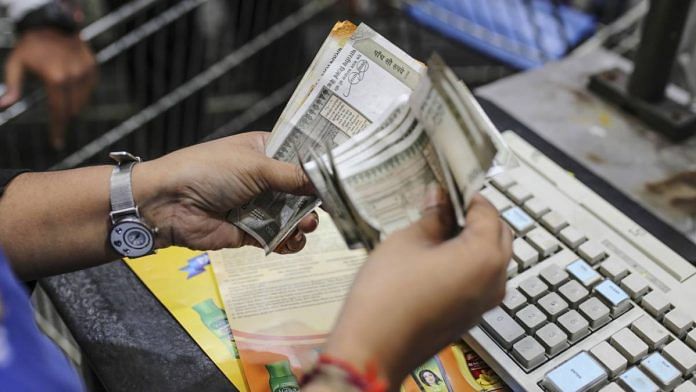During the recent appreciation of the US Dollar which caused the rupee to fall, it was clear that obsessing over the exchange rate is still a national pastime. At one level, some even argue that a stronger rupee vis-a-vis the dollar is a point of national pride. Politicians have also paid attention to this, promising a stronger rupee when in power and shaming the government if it falls. From these, it would seem as if a stronger rupee is better for us. But for a developing country like India, it is the need of the hour for the rupee to fall.
The primary function of a forex market is to facilitate trade and investment among different economies which use different currencies. Here’s how a hypothetical transaction would work out in this market: if a US-based company wants to pay their Indian employees, they would want to trade their dollars for rupees from someone who has rupees and wants dollars, and then pay the employee in rupees.
But there is a catch—not all currencies are created equal. There is a difference in the demand and supply of different currencies. Due to bigger economic clout, currencies like US Dollar are demanded more than say, the North Korean Won, and for political reasons, the Renminbi is undersupplied in the market. All of these factors affect the exchange rate of a currency.
Foreign exchange market is not just consumers and producers transacting with each other. The central bank is one of the biggest players in the foreign exchange market. They are the ultimate source of all fiat currencies and influence the currency supply through interest rates. They also participate in the market to manage the foreign exchange rate by buying and selling currencies whenever necessary to stabilize the foreign exchange rate at a certain level.
Also read: India will be forced to use more coal as gas prices ‘beyond means’, Sitharaman hints in US
The central bank wouldn’t need to maintain a foreign exchange reserve to buy and sell currencies in a free market because the market self-corrects. But in a controlled market where the central bank wants to maintain a specific exchange rate, it, in theory, should be able to service all transactions for that decided rate or as it happens in practice, the flow of foreign currencies would be restricted. Assuming a perfectly elastic supply of domestic currency, a central bank’s required amount of forex reserves are determined by the freedom and volatility of the forex market, the volume of foreign trade and the difference between the official exchange rate and the free market exchange rate.
Also read: IMF cuts India’s growth forecast to 6.8% from 7.4% for 2022
India’s forex situation
India has one of the biggest forex reserves in the world. While it is useful to have a substantial reserve for a potential crisis, considering what happened to Sri Lanka and Pakistan recently and to us in 1991, the primary function of a large reserve is to maintain a stable exchange rate. Judging by the huge reserves we have to keep to keep the rupee afloat, it is evident that there is a disparity between the free market exchange rate and the official exchange rate, and we are spending valuable reserves on maintaining that.
While all this might sound pointless, consider this: exchange rates act as a signal to the economy. If the rupee has a strong exchange rate, it disincentivises foreign consumers from buying Indian products since they are paying more for “less”; it further motivates Indian consumers to buy more foreign products (and not Indian products) as they are getting better value for money. This has two implications: 1) India will remain import-dependent as long as the rupee is overvalued, and 2) RBI has to pump money into the foreign exchange market to keep the rupee afloat.
The recent spurt of USD appreciating has brought these facts to light. FM Sitaraman addressed these developments arguing that depreciation boosting exports is a theoretical possibility and the depressed demand in the world economy means that exports may not pick up. But boosting exports and building industrial capacity is not a short term project, but something that requires patience and painful decisions, at least in the short term, and this short-term mentality has played a fair part in making sure that the rupee has been overvalued in the last 30 years
By artificially overvaluing the rupee, we are leaving money and jobs on the table. By letting the rupee reach closer to its free market rate while still maintaining economic stability, we can reduce the reserves spent on propping up the rupee and increase foreign investment and exports, which will create more jobs and reduce import dependence, all through a relatively simple bureaucratic action. There is no better cure than to let the rupee fall for an India battered with unemployment and underdevelopment.
The author is a Humanities and Social Sciences student at IIT Madras and a writing fellow at Students for Liberty. Views are personal



